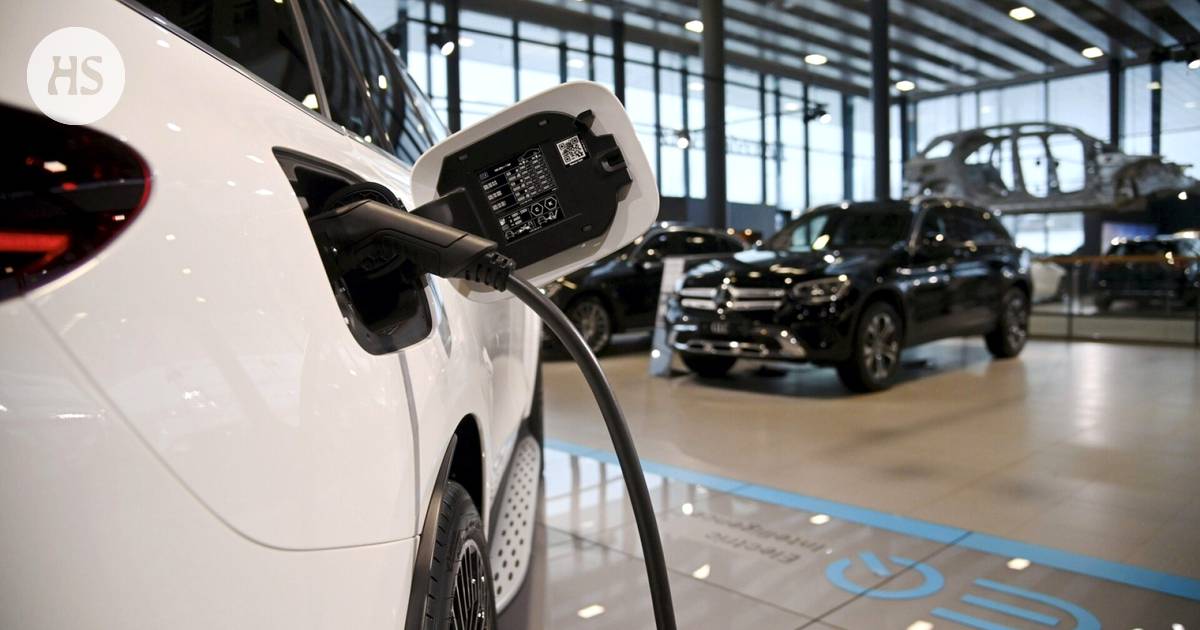According to VTT’s forecast, fully electric cars will drive half of the kilometers driven by passenger cars in ten years. According to the specialist, there are two initiatives on the government’s savings list that are destructive to development.
Electric cars the number will increase rapidly if the recent scenarios of the Finnish Technology Research Center VTT regarding the development of the Finnish car fleet are correct. But the number of kilometers driven by electric cars is growing even faster.
In ten years, half of the kilometers driven by passenger cars will be driven by fully electric cars. In 2022, the share was just over two percent.
However, the development predicted by VTT can be destroyed by ill-considered austerity measures, the specialist researcher thinks Marko Paakkinen. They would only save a little, but lose a lot.
“They have been a cost-effective way to increase the number of electric cars,” he says.
Scenarios are based on measures introduced by 2022 to reduce traffic emissions. They include, for example, the law on promoting the use of renewable fuels enacted in 2007.
In VTT’s scenario, the number of kilometers driven increases faster than the number of electric cars, because new cars are usually driven more kilometers than old ones. Driving with electricity is also cheaper than using gasoline or diesel.
The electrification of vehicles has been promoted, among other things, by procurement subsidies and by increasing the price of fossil fuels. These means are no longer on the current government’s list.
Specialist investigator However, according to Paakkinen, two particularly important small forms of support are now at stake, the scrapping of which could have a very harmful effect on the number of electric cars and thus on Finland’s emission development.
The second is the small tax advantage that company electric cars receive. It has cost the state car industry estimate including a paltry 13 million euros per year.
“This small reduction in the tax value has made electric cars even more affordable as company cars than combustion engine cars. It’s a shame if this is abandoned, because this has been a really cost-effective way to increase the number of electric cars,” says Paakkinen.
Company cars are usually replaced after about three years, so a small tax carrot has been an effective way to also get used electric cars on the market. This is important so that even people with lower incomes have the opportunity to get an electric car.
”
“Loading is a challenge.”
Second According to Paakkinen, the disastrous savings plan is the intention to abolish the subsidy paid for the construction of charging points for housing associations. Through ARA, 35 percent of the contract costs of charging equipment have been reimbursed. Last year, 13.5 million euros were earmarked for grants, which means that this is also a minimal amount compared to government spending.
Still, there is no promise of a sequel.
“Charging electric cars is actually a challenge in all apartment and townhouse companies. When the charging infrastructure has been built, people have often changed their cars to ones that can be charged very quickly,” says Paakkinen.
Electric cars the actual development may look very different from what VTT has predicted. At the moment, the demand for cars is also strongly affected by the rise in interest rates and the weak financial situation of households.
“Uncertainty is also caused by the reductions in the prices of electric cars, which have been led by Tesla and Chinese manufacturers. Buyers now have uncertainty as to whether it’s worth waiting anyway.”
Paakkinen believes that after this year’s downturn, the trade will pick up again.
“Even European manufacturers are coming up with offerings in the 25,000 euro price range.”
If the number of electric cars increases at the rate predicted by VTT, the carbon dioxide emissions caused by passenger cars would decrease very quickly.
In heavier ones in vehicles, the development is not as favorable. Heavy trucks will continue to use fuel for a long time to come.
Fossil-based fuels can be replaced by so-called electric fuels, which are made from green hydrogen and, for example, carbon dioxide emitted by the forest industry. Electric fuels are so far significantly more expensive to produce than fossil fuels.
According to VTT, reaching the emission reduction targets in heavy traffic would require additional measures.
